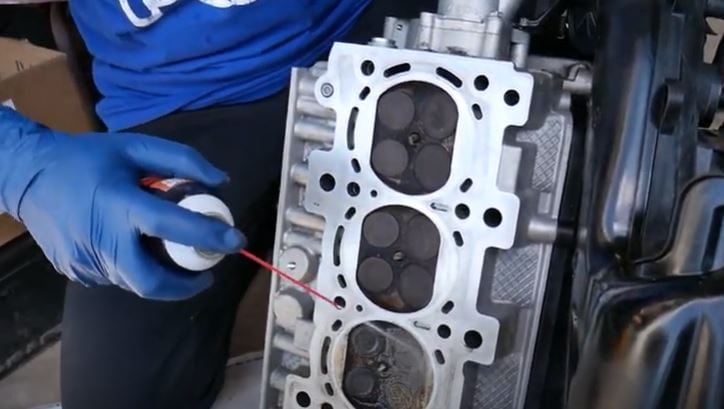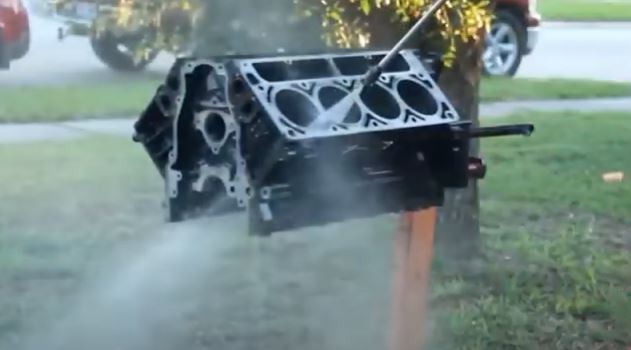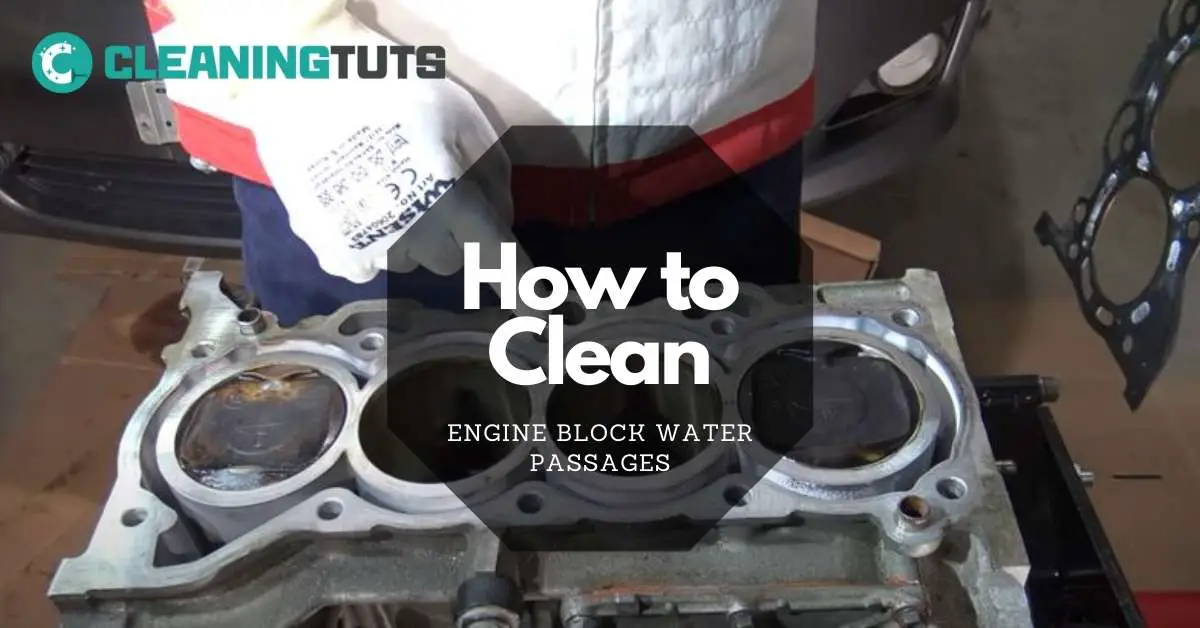How to Clean Engine Block Water Passages
When it comes to the coolant mechanism of the car engine, the water channel is a critical component. Its function is to allow coolant water to travel into it. And also, the mechanism will not function properly if this route is obstructed.
Regardless of how often the automotive engine is operated, an unexpected event occurs. One of them is a clogged water path in the engine block. Now the question is how to clean the water passageways in the engine block.
Water passageways abound in the cylinder block, which may be readily cleaned using nylon fiber sweeps and a powerful cleaning chemical.
Explore the thorough discussion of how exactly an obstruction upon that water path occurs, as well as methods to resolve the issue.
Why Do Water Blocks Get Blocked?

Before we get into the procedure, let us explain why it becomes blocked. Two significant causes for this are as follows:
Using Mineral-Enriched Water
People don’t usually get to utilize the river standard. If you live on a riverbank or seaside area, the liquid you enjoy may be heavy in minerals.
If this occurs, excessive use of such water will result in minerals and iron accumulation on the automobile engine water channel of the chilling system. After 6 months of usage, this accumulation becomes too narrow to allow water to move through it quickly.
Rust Deposition
The second major reason for the formation of blockages in the vehicle’s water flow is rust accumulation.
We understand that every portion of the chilling mechanism and also the water flow has layers of coatings that keep rust at bay. However, if you do not replace it once every few years, this protective coating will ultimately wear off.
Consequence? Rust accumulation on the metallic covering of the drainage route. The water eventually finds it difficult to travel through the conduit.
How to Clean Engine Block Water Passages?
Okay, we’ve arrived at the heart of this post. Collect the mentioned instruments to get the work done first:
- Crank stand.
- Cleanser.
- Brush with nylon bristles.
- Water connection
- Lamp.
Step 1: Take Out the Engine and Observe
Pull the engine compartment stand and check that it is properly supporting the engine. You’ll be able to envision the complete engine component and go on to the following phases this way. You’ll have a better peek at the interior of the liquid route, so ensure it’s large enough to accommodate your view.
Additionally, when there are still regions or angles that are unreachable, you may need to reposition your posture to gain access to such areas. Also, carry a lamp or torchlight handy to guide you the way along the passageway.
Step 2: Apply Degreaser

Locate the engine structure’s water path and insert the washer or grime eater into it. Before you begin the operations, you must make the degreaser mixture by combining this with water.
Ensure you performed the procedures outlined within the degreaser’s instruction handbook while making the mixture. Don’t use a degreaser that is too powerful or too mild. Check that it meets your vehicle’s specifications.
Allow the solvent to work its way through the water route for a couple of minutes. This will allow the solvent to operate more properly on the oil or grime that has accumulated along the route.
Step 3: Rub with a Brush

You may now require the nylon swab from the item list. Ensure the brush’s edges are strong and broad enough to access the hideaways and crannies of its water route.
Scrub the water route surfaces well with a brush while remaining the degreaser within. Make certain that you’ve used this technique on the regions with the greatest filth and oil.
After that, remove the degreaser, then repeat the process for the leftover spots. After this degreaser is removed, it will reveal additional filth and grease accumulations.
Step 4: Clean with Freshwater
Flush this with fresh water when you’ve finished scrubbing the water route well with nylon bristle. You may be wondering why this rinse is necessary.
After utilizing the nylon bristle, numerous nanoparticles of metal and oil will be released. These tiny particles and filth will slip out when you splash it with new freshwater.
After you’ve completed multiple rinsing using the same manner, replace the water channel. Check that you’ve put it together correctly.
How Do I Clean the Inside of My Engine Block?
Grease and filth may build up within, not just in the water passage. This might also obstruct the other portions of the engine block. Understanding how to clean the engine block is therefore essential.
Cleansing the interior of your engine block can be a complex task that should be done while the unit is removed from the vehicle and put along an engine riser.
Let’s move further with the process of cleaning the engine block.
Step 1: Remove the Engine
Attach the power cleaner or pipe to a warm water supply and place the engine over an engine riser.
Step 2: Soak with a Degreaser
Pour engine degreaser just on the engine compartment and let it sink in for the period specified on the package description.
Step 3: Rub with a Brush
Using a stiff-bristled brushing, remove built-up dust and filth from the engine chamber. To release the accumulated filth, splash brake parts cleaning into the fluid galleys, freeze cap holes, absorber bores, and piston bores.
Step 4: Clean with Hot Water and Soap
To prevent oxidation, wash the engine compartment with something like a stiff brushing, washing soap, and warm water while maintaining a continual stream of water well over the engine. Wipe the cylinder boreholes with soft cloths and the lifter boreholes and oil ducts with tiny brushes.
Step 5: Apply Lubricating Oil Spray
Wash all detergent first from the engine compartment and promptly treat all internal and external engine block components with such good lubricating oil application to prevent corrosion.
Step 6: Dry It
Spray the interior and exterior of the component with a pressure compressor to dry it. Apply a second application of lube oil spray.
Wash the cylinder boreholes clean with automatic transmission liquid and paper cloths. Continue until all filth and grime have been eliminated.
Wrap the engine compartment with a Ziploc bag and spray the cylinder boreholes with fresh motor oil before you’re ready to color and assemble it.
Can I Wash My Engine Block with Water?

You certainly can. Most contemporary automobiles’ engine bays may be doused with freshwater without creating any harm. Do not hit items like power supplies, inlet valves, or detectors using high-pressure water. Having your engine moist is entirely acceptable as much as you take caution.
The engine must be washed from the head down with a water hose or power washer. Furthermore, the second can peel paint from components and cut down plastics and rubber components, cables, pipes, and harnesses, but not metal. Following lifting the plastic covers, apply depressants on just a cloth to wipe the sections inside.
Frequently Asked Questions
Which Is the finest method for cleaning an engine compartment?
Scrape the engine cylinder with a stiff-bristled brush, washing soap, and warm water for preventing rust. Wipe the cylinder boreholes and lifter boreholes with soft cloths, as well as the oil pipelines and lifter boreholes with tiny brushes.
Is it bad to pressure wash the engine bay?
The engine block is theoretically safe to wash, and we advise doing it on a regular basis, just as you’d with the remainder of the automobile.
Is pressure washing the engine block okay?
Can it be safe to power wash your automobile engine? Before splashing fluids on your cylinder, cover the distributor, junction box, charger, and other electronic components with a sealed cover or plastic sheet. Other parts, in contrast to air screens, can be harmed.
Are the Steps for Cleaning Intake Manifold Runner Control Similar to Cleaning Engine Block Water Passages?
Yes, the steps for cleaning intake manifold runner control are similar to cleaning engine block water passages. Both require removing any buildup or debris from the system to ensure proper functioning. Using cleaning solutions and tools can help to effectively clean both intake manifold runner control and engine block water passages.
Final Thoughts
This is true, as we all know that automobile manufacturers have different cleaning methods recommended for their cars. The cleaning ford escape engine process is different from that of other cars. So, you should always check with your car manufacturer before starting to clean your car engine.
Therefore, that was just the collection of things you needed to take in order to have a freshwater passage. Now we believe that you would be cautious in this regard. You will experience an increase in engine efficiency after washing and replacing the engine in your automobile.

